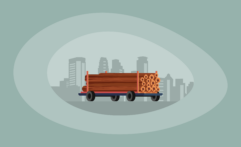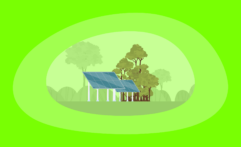20 Most Sustainable UK Clothing Brands: The Conscious Consumer’s Guide
Impactful Ninja is reader-supported. When you buy through links on our site, we may earn an affiliate commission.
Learn more
Learn more
.
Hey fellow impactful ninja ? You may have noticed that Impactful Ninja is all about providing helpful information to make a positive impact on the world and society. And that we love to link back to where we found all the information for each of our posts. Most of these links are informational-based for you to check out their primary sources with one click. But some of these links are so-called "affiliate links" to products that we recommend. First and foremost, because we believe that they add value to you. For example, when we wrote a post about the environmental impact of long showers, we came across an EPA recommendation to use WaterSense showerheads. So we linked to where you can find them. Or, for many of our posts, we also link to our favorite books on that topic so that you can get a much more holistic overview than one single blog post could provide. And when there is an affiliate program for these products, we sign up for it. For example, as Amazon Associates, we earn from qualifying purchases. First, and most importantly, we still only recommend products that we believe add value for you. When you buy something through one of our affiliate links, we may earn a small commission - but at no additional costs to you. And when you buy something through a link that is not an affiliate link, we won’t receive any commission but we’ll still be happy to have helped you. When we find products that we believe add value to you and the seller has an affiliate program, we sign up for it. When you buy something through one of our affiliate links, we may earn a small commission (at no extra costs to you). And at this point in time, all money is reinvested in sharing the most helpful content with you. This includes all operating costs for running this site and the content creation itself. You may have noticed by the way Impactful Ninja is operated that money is not the driving factor behind it. It is a passion project of mine and I love to share helpful information with you to make a positive impact on the world and society. However, it's a project in that I invest a lot of time and also quite some money. Eventually, my dream is to one day turn this passion project into my full-time job and provide even more helpful information. But that's still a long time to go. Stay impactful,Affiliate Disclosure
Why do we add these product links?
What do these affiliate links mean for you?
What do these affiliate links mean for us?
What does this mean for me personally?
![]()
Amid growing concerns about the textile industry’s environmental impact, there is pressure to find greener clothes for your wardrobe. And as modern supply chains for clothing tend to spread out all over the world, there is an argument to be made for lowering the impact of buying clothes by sticking with brands closer to home. So, we had to ask: Which are the most sustainable UK clothing brands?
The most sustainable UK clothing brands are Finnister, culthread, and Baukjen, which reduce the climate impact and strive for circularity. In addition, PANGAIA and BEEN London prioritize low-impact recycled and innovative materials while reducing textile waste.
Whether you are searching for an everyday T-shirt or a swimsuit made in the UK to add to your wardrobe without negatively impacting the soil, the water, the animals, and other people, there is a brand for you. So, let’s keep reading to learn more about the most sustainable UK clothing brands and how they ensure sustainable, ethical practices.
Here’s How Sustainable UK Clothing Brands Generally Are
The geographical journey of garments often plays a big role in their sustainability because it affects many social and ecological aspects in a product’s life-cycle, from the treatment of textile workers that are deemed fair to the use of chemicals that would be allowed by the local authority.
“Sustainable: The ability to be maintained at a certain rate or level | Avoidance of the depletion of natural resources in order to maintain an ecological balance”
Oxford Dictionary
To understand the sustainability of UK clothing, we’ve assessed the life-cycle and each stage’s sustainability. This life-cycle assessment (LCA) is a method to evaluate the environmental impacts of products and materials. Here’s a quick summary of our LCA of UK clothing!
Here’s How We Selected the Most Sustainable UK Clothing Brands
The brands on this list were chosen based on their commitment and actions to promote sustainable practices while reducing the environmental impacts of the textile industry.
They are transparent about their materials, processes, and workforce management within their supply chain.
Some brands focus their efforts on reducing waste and optimizing natural resources while others strive to reduce the carbon footprint of their clothes.
All of these brands share the commitment to reshape the textile industry toward a more sustainable and Earth-friendly sector.
These Are the 20 Most Sustainable UK Clothing Brands
Most Sustainable UK Clothing Brands
Overall, these UK clothing brands are sustainable. Yet, they take various approaches to reduce environmental impacts and uphold ethical standards. Let’s dive into each brand and find out more.
Finisterre: Ocean-Inspired Sustainable Outdoor Gear Made Ethically

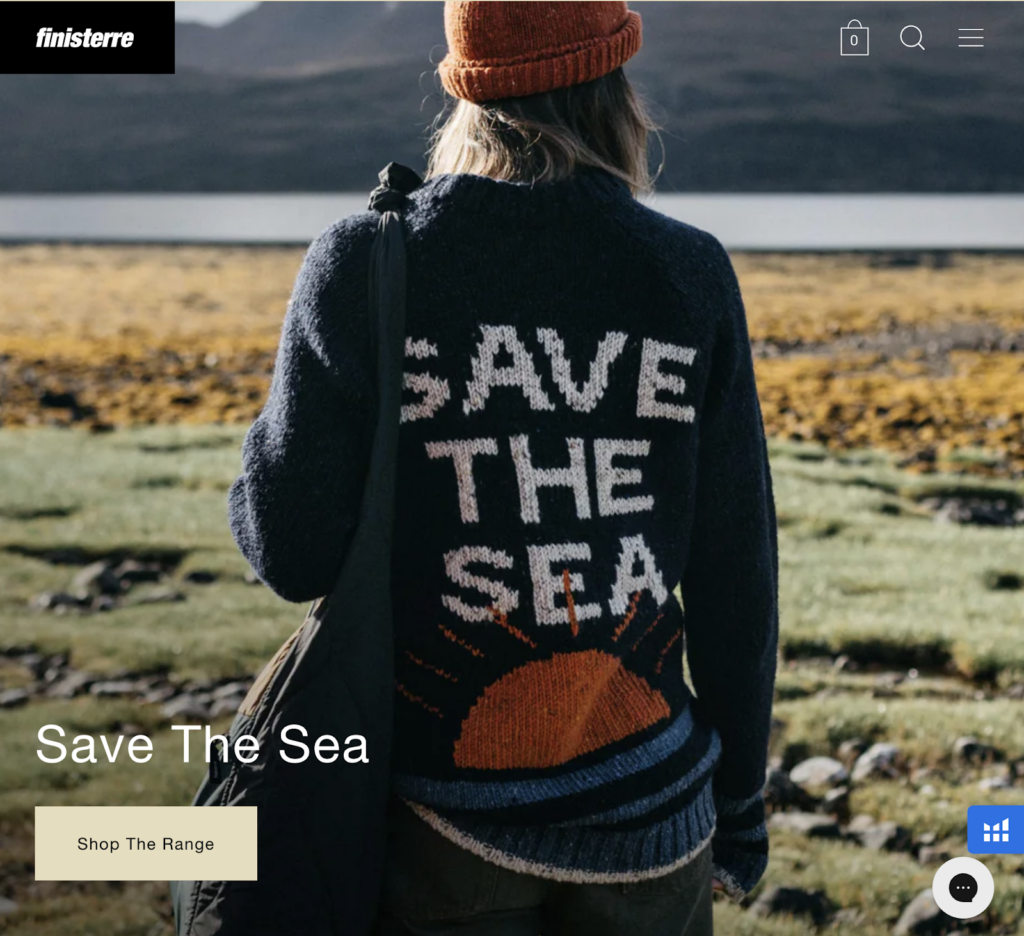
“Yet from our cliff top workshop, we stay true to our original design ethos of functionality and sustainability, remaining committed to product, environment and people.”
Tom Kay, Founder of Finisterre
🌎
How do they ensure their sustainability?
Finisterre places circular sourcing at the center of their sustainability commitment. They use renewable and recyclable textiles, as well as biodegradable natural fibers and finishes. At least 50% of their clothes are made using recycled fabrics. For example, in 2022, 87% of the synthetic polymer fabrics used in Finisterre clothes were made using recycled fabrics, including polyester recovered from post-consumer and post-industrial waste. They also use low-impact natural fibers, including GOTS-certified organic cotton, hemp, linen, and bamboo. In 2019, they replaced all plastic packaging with water-soluble, ocean-safe, and biodegradable “Leave No Trace” garment bags. Finisterre also strives to reduce textile waste by offering repair services and giving in-store credits for gear trades-in, which would be reconditioned for resale. On top of that, they implement various incentives to reduce their carbon footprint, including switching more of their stores and offices to renewable energy tariffs and transporting products using less carbon-intensive modes on land and sea. Last but not least, Finisterre is a B Corporation.
🌐
How do they ensure their ethics?
Finisterre is committed to full transparency in their supply chain, holding their partners to the high standards in their Code of Conduct and their Anti-Slavery & Trafficking Policy. Additionally, they partner with Fair Working Conditions (FWC), enabling the mapping of their supply chain, the screening of suppliers, and targeted audits at high-risk locations. Their facilities are also listed on Open Supply Hub. Lastly, Finisterre’s ethical values extend to their dedication to saving the sea. For example, they provide a free resource to inspire ocean activism.
🤝
Are they part of any giving-back programs?
Finisterre provides financial support to various giving-back campaigns and programs through the Finisterre Foundation, championing ocean access for all. For example, Finisterre turned 2021’s Black Friday into Blue Friday, where they swapped discounts for donations, raising funds for The Wetsuit Project, which adapts wetsuits for children and adults with various disabilities to access the sea. In 2022, Blue Friday was used again to raise money to support Level Water, which provides specialist swimming lessons for children with disabilities. Other projects include The Seasuit Project, City Kids Surfing, Seasuit Donation, and Art Auctioning for Good.
🛍️
What is their product range?
- Best for: menswear, womenswear
- Product range: shirts, pants, tops, sweaters, dresses, hoodies, shorts, denim, swimwear, jackets, blazers, sweatshirts, T-shirts, base layers, socks, shorts,
- Price range: $$
- Size range: XS–XXL
culthread: Stylish and Comfortable Jackets From Vegan and Deadstock Materials

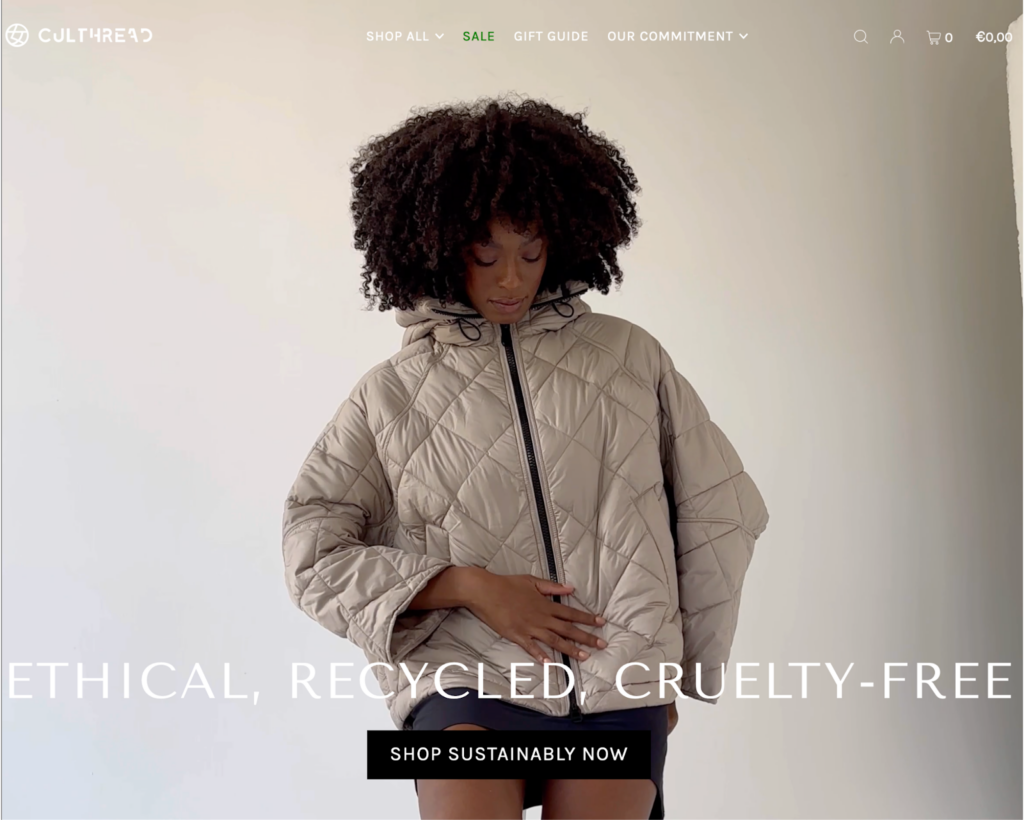
“I could not find a quality coat that aligned with my values, while also being stylish, practical and comfortable – despite working in the outerwear business for 15 years. I wanted a multi-pocket, hooded, 100% vegan, sustainable, lightweight, warm jacket. So I made my own.”
Rina, Founder of culthread
🌎
How do they ensure their sustainability?
culthread ensures sustainability by using a high proportion of low-impact textile and packaging materials, minimizing waste, and implementing incentives to reduce transport carbon footprint. At culthread, over 95% of jacket materials are vegan, recycled, or rescued. Specifically, they source Piñatex, 100% bio-based vegan leather, and recycled vegan leather made from coffee and bottle waste with water-based polyurethane (PU) coatings. Additionally, the polyester used for jacket fabrics, insulation, padding, and threads is 100% recycled with certifications from the Global Recycle Standard and OEKO-TEX® STANDARD 100. Regarding packaging, all their products come in a reusable “Destroy the Patriarchy not the Planet” laundry bag, made fully from production offcuts and deadstock. Beyond that, their mailer bags are biodegradable, recyclable, and plastic-free. The tape is also a fully biodegradable and 100% plastic-free self-adhesive paper packing tape. Furthermore, culthread minimizes waste by limiting production runs, optimizing fabric cutting using laser technology, and reusing old leftover material for new designs. Regarding transport carbon footprint reduction, the brand implements technology to reduce the back-and-forth of sample products at the design stage, while sourcing materials near where their factory is located. Lastly, they provide tips for customers to stay sustainable post-purchase by extending the lifespan of a product through caring, repairing, and donating.
🌐
How do they ensure their ethics?
culthread ensures their ethics by being transparent about their supply chain, including who their suppliers are and which certifications they hold. They have 100% traceability on our Tier 1 & 2 suppliers and visit their suppliers regularly. Furthermore, their partner suppliers are third-party audited, and their Supplier Code of Conduct covers ILO’s Four Fundamental Freedoms principles. Also, they pay tailors in their Vietnam-based factory aligned and above the Asia Living Wage and the Global Living Wage.
🤝
Are they part of any giving-back programs?
culthread supports various organizations, including Dress for Success Greater London, Crisis, Collective Aid, and Broken Shovels Farm Sanctuary.
🛍️
What is their product range?
- Best for: womenswear
- Product range: jackets, accessories
- Price range: $$
- Size range: XS–L
Baukjen: Womenswear Designed for Circularity and Made Sustainably
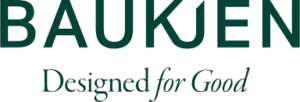
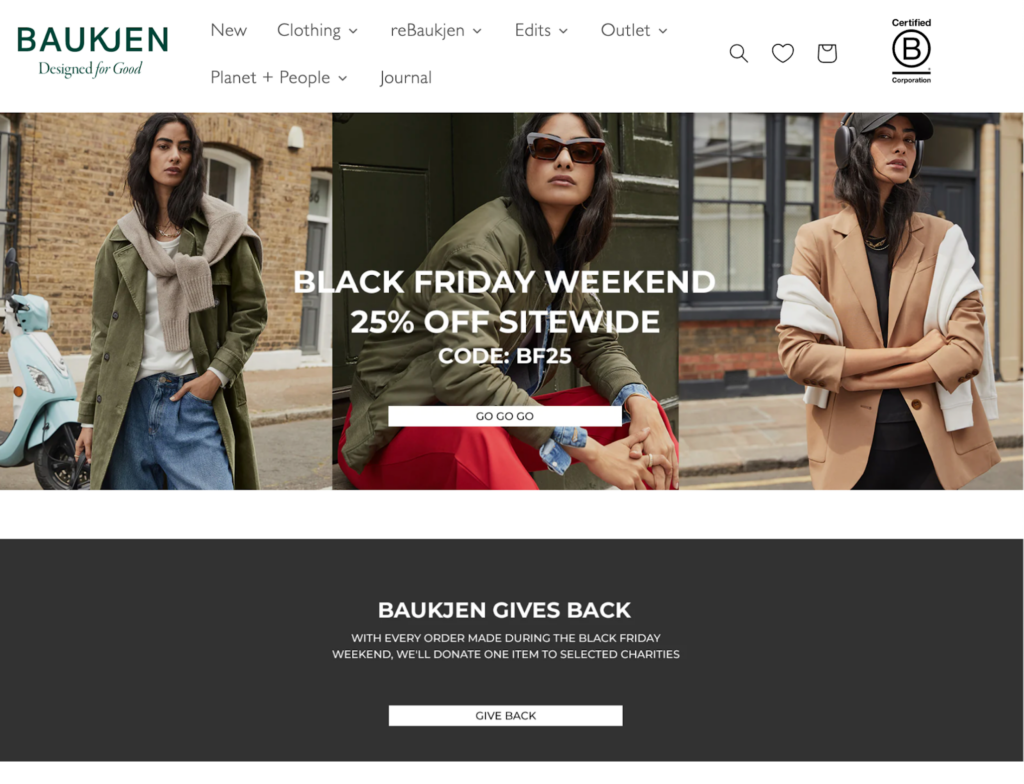
“Our collections are designed for the modern woman struggling with a busy lifestyle. Effortless style is our design signature, premium quality is our standard so our clothes can be worn year after year.”
Baukjen
🌎
How do they ensure their sustainability?
Baukjen ensures sustainability by swapping planet-unfriendly materials for more responsible ones, cutting down environmental impacts throughout their supply chain, and moving toward a circular model. They lower their impact and contribute to a circular materials economy by increasing the proportion of recycled fibers (Ecotec recycled cotton, recycled sheep wool, recycled cashmere, Newlife recycled polyester, recycled down) and regenerative fibers. For example, in the second quarter of 2023, 98.6% of the materials used were from responsible sources with traceable origins, while 98.2% of the fibers used had a proven lower environmental impact. With high-impact textiles like leather, Baukjen reduces the adverse impacts by opting for exclusive by-products of food production and sourcing from tanneries that use vegetable extracts, such as tree bark and leaves, instead of nonrenewable metal salts. Further down the life-cycle in the manufacturing stage, they continue to lower the impacts by reducing water usage, using 100% renewable energy in offices and warehouses to decrease their carbon footprint, and minimizing manufacturing waste. For example, the water consumption and carbon emissions in the second quarter of 2023 were 47% and 31% lower than the same quarter in 2020, respectively. Baukjen is also a Zero Waste business, meaning that over 90% of their “waste” is neither landfilled nor incinerated. Once finished, their garments are shipped in 100% plastic-free, recyclable, and biodegradable packaging made from a recycled paper mix certified by FSC or PEFC. Lastly, Baukjen strives toward circularity through their re-commerce initiatives: Pre-Loved, Rental, and Care and Repair.
🌐
How do they ensure their ethics?
Baukjen ensures their ethics by maintaining a high level of transparency regarding their factories and the impacts of their garments. They share the list of their factories, from Tier 1 to Tier 3 suppliers. Their Code of Conduct, signed by all direct suppliers (Tier 1) and some indirect suppliers (Tier 2), covers all of ILO’s Fundamental Freedoms principles. They also visit their factories regularly and enforce third-party audits. Additionally, they offer insights into the sustainable attributes of each item in their collection, such as the impact, the traceability, the carbon emission, and the nature of the fibers used.
🤝
Are they part of any giving-back programs?
Baukjen gives at least 10% of their annual profits to charities, including NHS Charities Together, GOSH, Oxfam, Strut Safe, World Land Trust, Prince’s Trust, and Birth Companions. Their team is offered two days per year to volunteer at charities of their choice. For three years running, they have swapped deals for good deeds over the Black Friday Weekend, opting instead to donate profits or clothing over the four-day shopping bonanza to a range of deserving charities, such as the UK women’s charity Smart Works.
🛍️
What is their product range?
- Best for: womenswear
- Product range: shirts, blouses, sweatshirts, cardigans, dresses, tops, jackets, blazers, outerwear, T-shirts, vests, jeans, pants, skirts, knitwear, jumpsuits, joggers, pajamas, underwear, tights, maternity wear
- Price range: $$
- Size range: XS–XXL
PANGAIA: Comfort-Focused Clothing Made Sustainably With Innovative Textiles
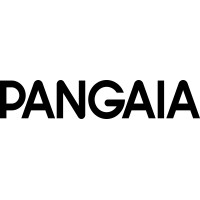
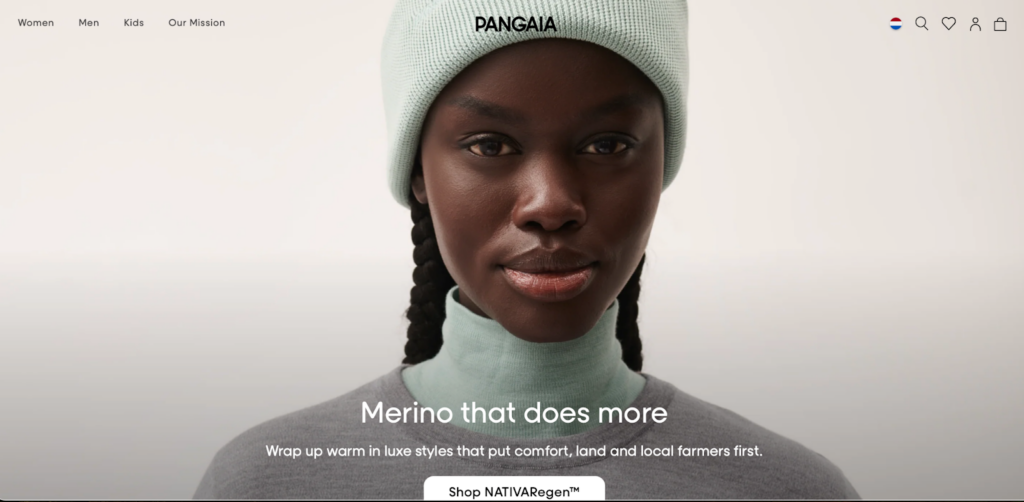
“ Every product we create is born from science and purpose, each solving an environmental problem of the industry. ”
PANGAIA
🌎
How do they ensure their sustainability?
PANGAIA ensures sustainability by diversifying materials options and shifting toward circular systems in which they regenerate nature, design out waste and pollution, and keep products and materials in use. Regarding sourcing materials, they opt for low-impact materials from nature and introduce new and lower-impact alternatives when possible, for example, by replacing animal leather with vegan leather. PANGAIA has also established their Preferred Material List (PML), which is diligently assessed based on a variety of criteria, including end-of-life pathways, visibility of the supply chain and raw material inputs, LCA results, certifications, chemical and water intensity, recycled and diverted waste streams, geographical provenance, end-use of the material, and performance against conventional alternatives. In 2022, 29% of PANGAIA’s collections were made with the top two most sustainable materials on this list, which includes natural fabrics made fully with organic cotton, regenerative cotton, organic linen, organic hemp, organic kapok, regenerative cashmere, and recycled cashmere. They also make use of innovative materials to replace high-impact traditional fabrics, for example,plant-based, ethically-sourced FLWRDWN™ to replace goose and duck down, FRUTFIBER™ to replace conventional cotton, or bio-based material MIRUM® and VEGEA to replace animal and synthetic leather. Further down the life-cycle in the manufacturing stage, PANGAIA applies innovative treatments to reduce waste and water use. These include AIR INK®, miDori® bioWick, and the bioengineered dye technology COLORFIX.
🌐
How do they ensure their ethics?
PANGAIA binds suppliers in a Code of Conduct that covers all of the ILO’s Four Fundamental Freedoms principles. They also make statements regarding Diversity and Inclusion, Modern Slavery, Child Labour & Young Workers Policy, and Human Rights Policy. In addition, they trace most of their supply chain, including all of the final stages of production. In 2022, they extended their transparency by mapping and publishing their Tier 1 subcontractors and Tier 2 suppliers while having 95% of their suppliers audited by a third party.
🤝
Are they part of any giving-back programs?
PANGAIA has been part of various philanthropic programs since their inception. They plant a mangrove tree for every product sold. PANGAIA is a member of 1% for the Planet, meaning that with every product you buy from them, a sum is going to support the planet in one way or another. For example, through their partnership with Milkywire, PANGAIA launched two grassroots funds, Tomorrow Tree and Bee the Change, working collaboratively with communities in various conservation initiatives. They also partner with Coral Gardeners, an organization dedicated to saving our oceans’ coral reefs, which are in rapid decline. Additionally, they provide financial and in-kind support for humanitarian causes such as support for refugees and displaced people, racial justice and LGBTQIA+ rights, frontline workers, and young people.
🛍️
What is their product range?
- Best for: womenswear, menswear, kidswear
- Product range: hoodies, knitwear, outerwear, sweatshirts, tops, T-shirts, pants, denim, shorts, activewear, gloves, hats, socks, accessories
- Price range: $$$$
- Size range: XS–XL
BEEN London: Timeless Accessories From Recycled Leather Offcuts and Plastic Bottles
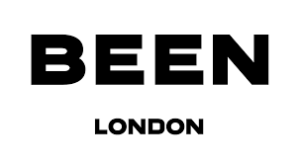
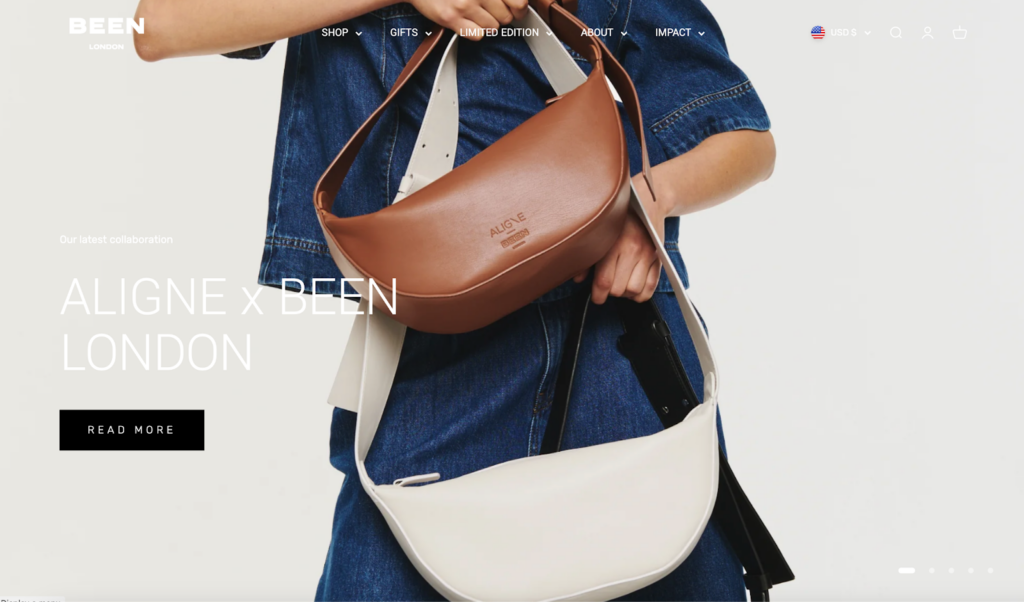
“We make versatile, timeless accessories from discarded materials that would otherwise go to landfill. In doing so, we are shifting the narrative around waste, showing what is possible with new innovations, and doing our part to protect nature.”
BEEN London
🌎
How do they ensure their sustainability?
BEEN London’s sustainability efforts focus on circularity. They start with reverting waste away from landfills and into making clothing accessories. BEEN London also uses a high proportion of low-impact materials, including GRS-certified recycled materials from post-consumer plastic bottles, fishing nets, plant-derived waste, used textiles, and leather offcuts and trimmings. Specifically, they source recycled leather, recycled nylon, recycled polyester, recycled cotton, and recycled felt. Additionally, they have some bags made with vegan leather alternatives, including Piñatex and AppleSkinTM, made with agricultural and industry waste. Beyond sourcing, BEEN London also considers circularity in every decision. Specifically, they strive to limit the amount of waste they create through their design process, such as opting to make mostly rectangular bags with which they can achieve near zero offcuts. Any offcuts that are created in the production process are collected and recycled. Furthermore, they design durable, versatile, seasonless, timeless pieces that consumers will still want to wear year after year. BEEN London also helps extend product lifespan by offering repairs and incentivizing end-of-life recirculating. The design of their bags also covers end-of-life recycling, meaning that they preempt the dismantling challenges by stitching the lining to bags, using water-soluble glues, or even leaving their bags unlined. When reuse and repair are no longer an option, customers can send their bags back to BEEN London, where they will be dismantled for material recycling. Lastly, BEEN London strives to reduce their climate impact by opting for sea freight and offering zero-emission London delivery.
🌐
How do they ensure their ethics?
BEEN London makes everything locally in East London to ensure the highest level of transparency. They also trace all of their supply chain and visit their suppliers regularly.
🤝
Are they part of any giving-back programs?
BEEN London gives back by planting trees in the Amazon Rainforests. They plant a tree for every leather item in the color Rainforest Green ordered and sold. The impact of their reforestation efforts is tracked via Forest of BEEN London on their partner platform, Tree-Nation. Additionally, BEEN London supports Smart Works, a charity that gives women the confidence they need to reach their full potential by incentivizing customers to bring or mail (pre-paid) their pre-loved bags from any brand for recirculating.
🛍️
What is their product range?
- Best for: womenswear
- Product range: backpacks, handbags, satchels, totes, wallets, purses
- Price range: $$$
- Size range: n/a
E.L.V. DENIM: Timeless Denim Apparel Made With 100% Upcycled Materials
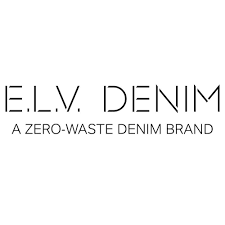
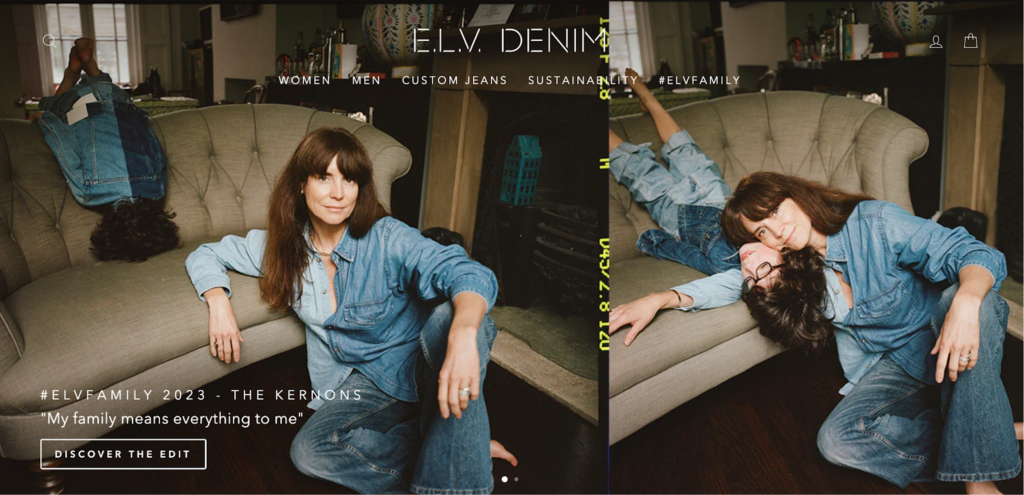
“With considered upcycling and fabric-first curated sourcing, we can meet the global demand for design-led luxury fashion and be kinder to the environment.”
E.L.V. DENIM
🌎
How do they ensure their sustainability?
E.L.V. DENIM‘s commitment to sustainability lies in their zero-waste ethos. They source second-hand jeans and other existing garments, for example, silk scarves and cotton shirts, to upcycle the materials for their denim clothes. All their designs, down to the leather label, are upcycled from existing garments that would otherwise be sent to landfill. Additionally, offcuts are reconstructed as patchwork fabrics and reincarnated as new materials, such as paper, while smaller threads are turned into insulation. They advocate against overconsumption and enable trading in and rotating pre-loved denim jeans via their partnership with Reskinned and Curate & Rotate. Lastly, E.L.V. DENIM sources and manufactures their products locally within East London to reduce the climate impact of long-distance shipping.
🌐
How do they ensure their ethics?
E.L.V. DENIM ensures their ethics by keeping their production in the UK with partners who have high social and quality standards. The artisans who work on their denim clothes are paid fairly for their work. As well, E.L.V. DENIM traces most of their supply chain and visits their suppliers regularly.
🤝
Are they part of any giving-back programs?
E.L.V. DENIM works with local schools and universities, providing fabric for textile classes.
🛍️
What is their product range?
- Best for: womenswear, menswear
- Product range: denim, shirts, pants, shorts, jackets, blazers, jumpsuits, playsuits
- Price range: $$$$
- Size range: XS–L
Stay Wild: London-Based Swimwear Brand Fighting the Plastic Problem in the Oceans

“Designed and made in London, our pieces have a purpose with every element considering people and the planet.”
Stay Wild
🌎
How do they ensure their sustainability?
Stay Wild ensures their sustainability by sourcing low-impact textile and packaging materials. Specifically, they use ECONYL® yarn, a 100% regenerated nylon fiber made from nylon waste, to make swimwear, contributing to reducing ocean plastic waste and lowering the impact of using synthetic fabrics. Stay Wild also sources low-impact plant-based fabrics, including linen, TENCELTM, and EcoveroTM. Furthermore, their linen and EcoVeroTM fabrics are certified by OEKO-TEX®. Their TENCELTM fabrics are produced in a closed-loop system that recycles and reuses process chemicals. On top of that, Stay Wild ensures that the trims and components of their garment are as sustainable as possible. For example, they use thread made from rPET (repurposed from recycled plastic bottles), biodegradable buttons (made from sustainably sourced and renewable nuts), and compostable plant-based hygiene liners. Regarding packaging materials, their hang tags and outer packages are recycled and recyclable. Alongside using recycled fabrics, Stay Wild also works toward being fully circular via several initiatives, including facilitating proper care of swimwear, correct recycling once an item is worn out, and taking back worn down and broken swimwear from any brand. Lastly, they work with carbon-neutral shipping partners to reduce the climate impact of their transportation.
🌐
How do they ensure their ethics?
Stay Wild partly traces their supply chain, including the final production stage. Some of their suppliers are certified by the Sedex Members Ethical Trade Audit – SMETA Best Practice Guidance.
🤝
Are they part of any giving-back programs?
Stay Wild is not known to be part of any giving-back programs.
🛍️
What is their product range?
- Best for: womenswear
- Product range: swimwear, shirts, shorts, accessories
- Price range: $$$
- Size range: XS–XL
People Tree: The Pioneer to Fair Trade Fashion
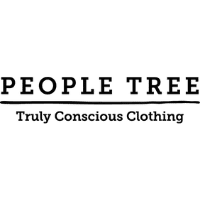
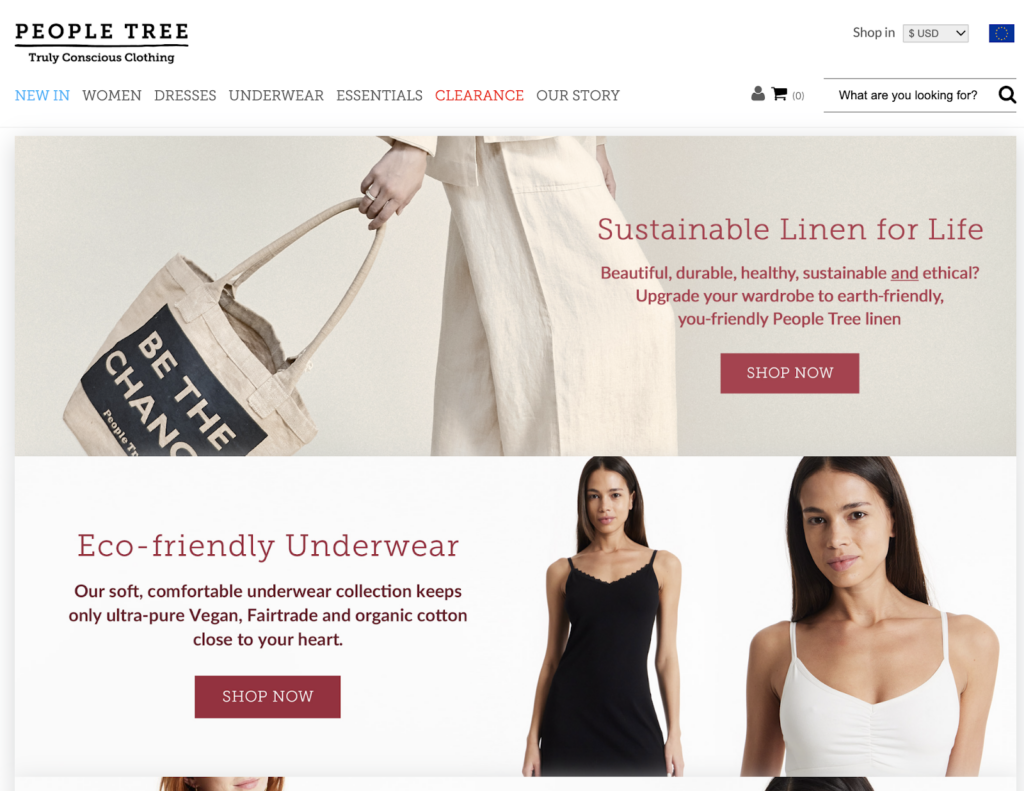
“ We build awareness to empower customers and producers to participate in Fair Trade and environmentally sustainable solutions.”
People Tree
🌎
How do they ensure their sustainability?
People Tree ensures sustainability by opting for low-impact materials, processes, and techniques. They only use natural fabrics made with low-impact fibers such as linen and GOTS-certified organic cotton or semi-natural/ semi-synthetic fabrics that follow closed-loop processes (such as TENCEL™). The brand also uses low-waste cutting techniques to maximize fabric use. Lastly, their packaging is recyclable.
🌐
How do they ensure their ethics?
People Tree puts fair trade and ethical production practices at the core of their brand. They are a pioneer of fair trade fashion, guaranteeing better prices, decent working conditions, local sustainability, and fair terms of trade for farmers and workers in the Global South. They are also a member of the World Fair Trade Organization, which works on the 10 Principles of Fair Trade, including opportunities for disadvantaged producers and a commitment to no child labor or forced labor.
🤝
Are they part of any giving-back programs?
People Tree is actively involved in initiatives to improve access to education for adults and children in the most vulnerable communities and programs that support people with disabilities and disadvantages. They also campaign for fair trade, sustainability, and social justice.
🛍️
What is their product range?
- Best for: womenswear
- Product range: skirts, dresses, pants, tops, blouses, jumpsuits, socks, underwear
- Price range: $$
- Size range: S–XL
Rapanui: Made-To-Order Clothes Using Highly Sustainable Materials


“Our commitment to a cleaner way of living and doing business has made us stronger and, like any good relationship, we take every day as it comes.”
Rapanui
🌎
How do they ensure their sustainability?
Rapanui promotes sustainability by sourcing organic and recycled materials, operating on renewable energy, and removing plastic from packaging. In particular, their products are designed for the circular economy, where they can be returned and remade. They also recover organic material from worn-out Rapanui products sent back to them and blend them with organic cotton to make new yarn. On top of that, they print their clothes in real-time, making what people need when they need it while reducing both the associated waste and cost. Their packaging is also plant-based instead of plastic. Furthermore, about 95% of the water used to dye Rapanui products is recovered, cleaned, and recirculated. And lastly, their supply chain uses renewable energy (solar and wind).
🌐
How do they ensure their ethics?
Rapanui traces most of their supply chain.
🤝
Are they part of any giving-back programs?
Rapanui shares access to their supply chain and the technology they have developed on Teemill. This open-source circular fashion platform empowers other entrepreneurs to start their own sustainable clothing brands.
🛍️
What is their product range?
- Best for: menswear, womenswear
- Product range: T-shirts, jumpsuits, playsuits, pants, shorts, hoodies, sweatshirts, socks, underwear
- Price range: $
- Size range: S–L
Mayamiko The Label: Sustainably Made Cross-Seasonal Clothes Inspired by African Artisanal Traditions

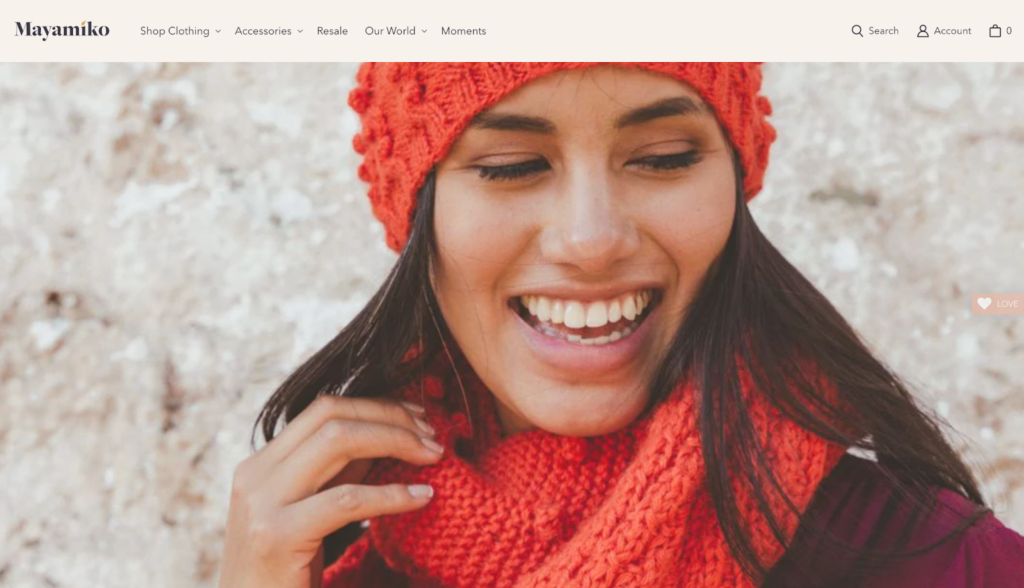
“Here at Mayamiko we believe the only way to do good business is to do good by our people and the planet too. This is why we are constantly trying out new ways to reduce our footprint and give back to Mother Earth.”
Mayamiko The Label
🌎
How do they ensure their sustainability?
Mayamiko The Label ensures their sustainability by sourcing a high proportion of eco-friendly textile materials, reducing their carbon emissions, and cutting down textile waste. Specifically, they use low-impact natural fabrics, including GOTS-certified organic cotton, deadstock fabrics (silk and cotton jersey), and linen. Further down the life-cycle in the manufacturing stage, Mayamiko The Label opts for 100% botanical dyes made from food waste, such as avocado stones and pomegranate skins from hotels and restaurants, along with foraged leaves and medicinal plants. All of their packaging—including postal bags, stickers, labels, and tissue paper—is made from recyclable or compostable materials and printed using eco-friendly inks. Additionally, their garments are made with locally sourced materials and in a solar-powered workshop, reducing the climate impact of production. The brand further reduces their ecological impact by minimizing their textile waste. Firstly, they employ a zero-waste pattern cutting technique, meaning that garments are designed to utilize the fabric and avoid waste at the point of cutting. In doing so, they aim to turn all scrap fabric into something new, such as headbands, protective parcel bags, doormats, and reusable sanitary pads for young girls in the community. Secondly, their designs are adaptive and can be worn in many ways, so each piece can get more use during its lifespan. Lastly, they partner with By Rotation and OWNI to enable the rental and resale of their garments.
🌐
How do they ensure their ethics?
Mayamiko The Label binds their suppliers with a Code of Conduct that covers four of the ILO’s Fundamental Principles and Rights at Work. They trace most of their supply chain and visit their suppliers regularly. Mayamiko The Label also ensures that workers in the final production stage are paid well and treated with respect. Where available, they use living wage or fair trade wage indicators. Where not available, they use measures of the magnitude of the local minimum wage (at least two times higher and often three or four times higher). The brand also strives for higher transparency by providing a unique encrypted QR code with many garments, telling the garment’s story and showing the artisans who made it.
🤝
Are they part of any giving-back programs?
Mayamiko The Label partners with One Tree Planted to offer customers the option to plant a tree with each order. The brand also has an initiative to donate recyclable sanitary pads to girls in refugee camps alongside feminine hygiene programs.
🛍️
What is their product range?
- Best for: womenswear, menswear, unisex
- Product range: tops, dresses, jumpsuits, playsuits, skirts, shorts, pants, jackets, loungewear
- Price range: $$
- Size range: S–XL
Stella McCartney: Luxurious Fashion Clothing Made Ethically and Sustainably
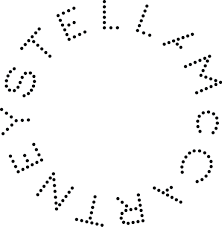
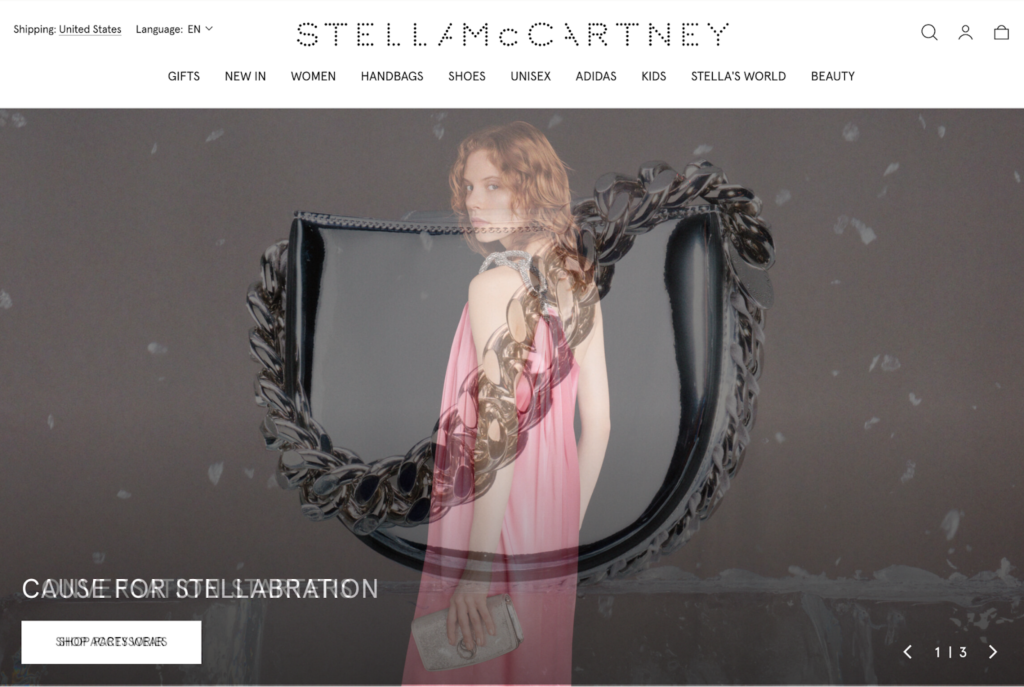
“We are committed to being an ethical, modern and honest company without compromising on luxury or quality.”
Stella McCartney
🌎
How do they ensure their sustainability?
Stella McCartney ensures sustainability by making use of the most cutting-edge and progressive materials that aim to reduce the environmental impact on the planet and are always cruelty-free while following the principles of circularity. They use a medium proportion of eco-friendly and innovative materials, including GOTS-certified organic cotton, cashmere from 100% recycled waste Re.Verso™, and low-impact plant-based alternative materials (BananaTex®, VEGEA, Mylo™, MIRUM®). Specifically, they have invested in the parent company that makes MIRUM®, an entirely plastic-, fossil fuel- and water-free alternative to animal leather. Also, their Frayme Mylo™ is the world’s first-ever luxury bag made with vegan leather crafted from mycelium, the root-like structures of fungi. Further down the life-cycle, Stella McCartney employs technological advances to trace their products, lower their manufacturing impact, and increase their circularity. Additionally, they exclusively use paper that is either FSC-certified or made from at least 50% recycled content in their packaging. In 2014, the brand launched Clevercare—a garment labeling system covering five simple areas of clothing care: washing, temperature, drying, ironing, and dry cleaning to help extend the life of garments, decrease the number of pieces that end up in landfill, and reduce their life-cycle environmental footprint.
🌐
How do they ensure their ethics?
Stella McCartney commits to transparency across supply chains through diligent reporting, measuring, and tracking. Stella McCartney is also a member of the Ethical Trading Initiative (ETI), a human rights organization driving force in ethical trade. On top of that, they trace most of their supply chain. Additionally, Stella McCartney uses lambswool and sheep wool certified with Responsible Wool Standard, appropriately addressing the welfare of sheep (and their calves) and the land they graze on.
🤝
Are they part of any giving-back programs?
Stella McCartney partners with and supports many charities, including but not limited to BioPlanet, Million Trees Miami, Naked Heart Foundation, Meat Free Monday, and Sea Shepherd.
⚒️
What they do:
- Best for: womenswear, unisex, kidswear
- Product range: shirts, skirts, denim, sweaters, swimwear, dresses, pants, jackets, blazers, hoodies, knitwear, tops, blouses, T-shirts, underwear, socks, shorts, jumpsuits, playsuits, shoes, accessories, plus-size
- Price range: $$$
- Size range: XS–3XL
Pop My Way: GOTS-Certified Organic Cotton Baby Essentials

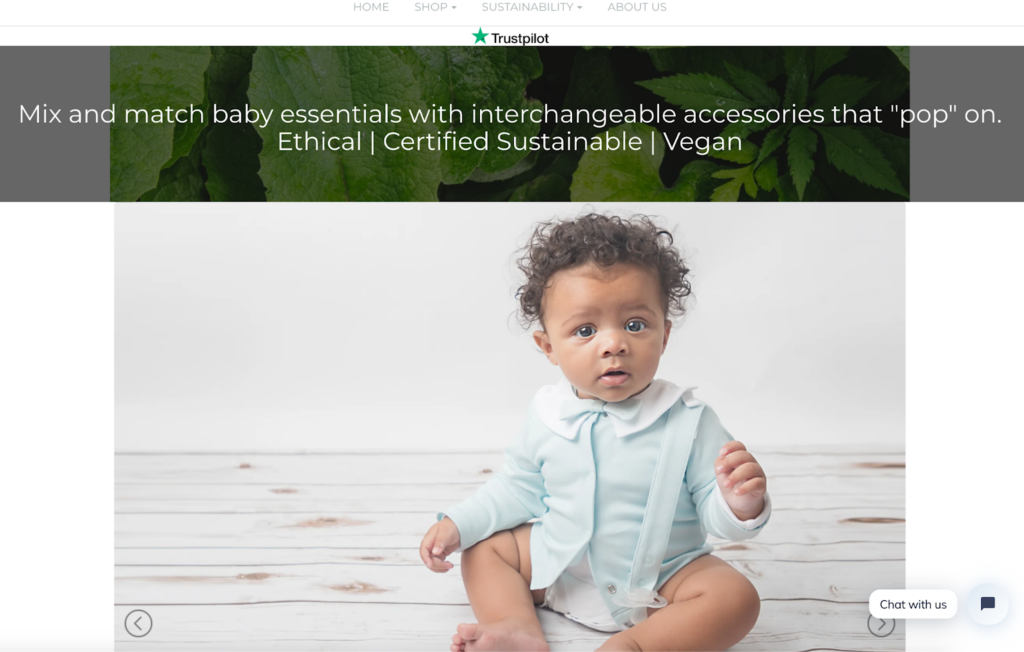
“All Pop My Way garments are produced in a GOTS certified factory, which means that our entire supply chain process is monitored and audited regularly.”
Pop My Way
🌎
How do they ensure their sustainability?
Pop My Way ensures their sustainability by sourcing low-impact materials, minimizing textile waste, and reducing their climate impact. All Pop My Way clothing is made from 100% Pima cotton, certified organic by the Global Organic Textile Standard (GOTS). Their Pima cotton is harvested by hand, which reduces the climate impact. Further down the life-cycle in the manufacturing stage, Pop My Way opts for safe dyes certified by GOTS and OEKO-TEX® STANDARD 100, ensuring rigorous tests against harmful chemicals. Their garments’ popper and zipper components are nickel-free while fulfilling REACH and OEKO-TEX® STANDARD 100. Pop My Way is also committed to eco-friendly practices regarding packaging. They minimize packaging by using a single sturdy branded mailing box that acts as a gift box and mailing box all in one. Smaller orders are sent out in an eco-friendly mailing bag. All mailing boxes are FSC certified, while all mailing bags are bio-based (derived from sugar cane), fully recyclable, and carbon neutral. Packaging components such as tissue paper and stickers are printed with soy ink on FSC-certified and acid-free paper. Secondly, Pop My Way approaches textile waste reduction by designing garments to last and be passed on. Their collection is based on high-quality mix-and-match unisex items with neutral color palettes so that they can be passed down once a baby no longer needs them. The brand also has launched “Pop My Way Preloved”, which will allow customers to return their used Pop My Way clothing in exchange for a discount, keeping garments longer in circulation. They also donate or repurpose any items unsuitable for reselling. Lastly, Pop My Way partners with Ecologi, pledging a climate-positive workforce. They offset the entire carbon footprint of their workforce, including emissions from their homes, personal travel, holidays, food, hobbies, and more. All business travel is also offset. Finally, they plant trees in their company forest every month and finance carbon reduction projects from around the world.
🌐
How do they ensure their ethics?
Pop My Way ensures their ethics by guaranteeing that their entire supply chain is fully certified by the Global Organic Textile Standard, meaning that the wages paid to factory workers are monitored and audited regularly.
🤝
Are they part of any giving-back programs?
Pop My Way is part of the No Issue Eco-Packaging Alliance, which contributes to global reforestation. For every order on their site, the No Issue Eco-Packaging Alliance plants trees in areas of need.
🛍️
What is their product range?
- Best for: kidswear
- Product range: tops, bottoms, sleepsuits, accessories
- Price range: $$$
- Size range: 0–18 months
Neem: Men’s Clothing From a Carbon-Neutral Production System
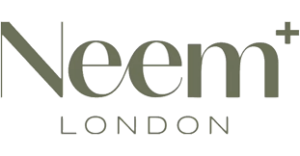

“We have measured the waste, energy, GHG, and water usage through a life cycle analysis, to fully understand the environmental impact of what we are producing.”
Neem
🌎
How do they ensure their sustainability?
Neem prioritizes sustainability by sourcing a high proportion of low-impact materials, offsetting their carbon emissions, and striving to close the loop in fashion. Firstly, their clothes are made with recycled, regenerative, and renewable fibers, including recycled cotton, regenerative cotton, and regenerative ZQ merino wool. Secondly, they aim to reduce their climate impact by reducing and offsetting their carbon footprint. Neem partners with Green Story to identify ways to cut down emissions, including using renewable energy in the supply chain and keeping manufacturing close to their base. Furthermore, they offset all their production emissions by way of three charities: Harmalik Wind Power Plant in Turkey, Reforestation in Peru, and Safe Community Water in Rwanda. Their end-to-end production system is 100% carbon neutral. Lastly, Neem strives toward fashion circularity by using recycled fibers, offering clothes repair services, and recycling clothes from any brands.
🌐
How do they ensure their ethics?
Neem traces most of their supply chain. Specifically, their recycled cotton, regenerative cotton, and merino wool products are fully traceable from farming or recycling/shredding to weaving and apparel making. Regarding their climate impact, they share the life-cycle water usage, energy demand, and carbon emissions of their shirts so that customers know the impact when buying their products.
🤝
Are they part of any giving-back programs?
Neem is not known to be part of any giving-back programs.
🛍️
What is their product range?
- Best for: menswear
- Product range: overshirts, comfort shirts, shirts, popovers, T-shirts, polos, accessories
- Price range: $$$
- Size range: S–XXL
Where Does It Come From?: Kind Clothes That Tell Tales

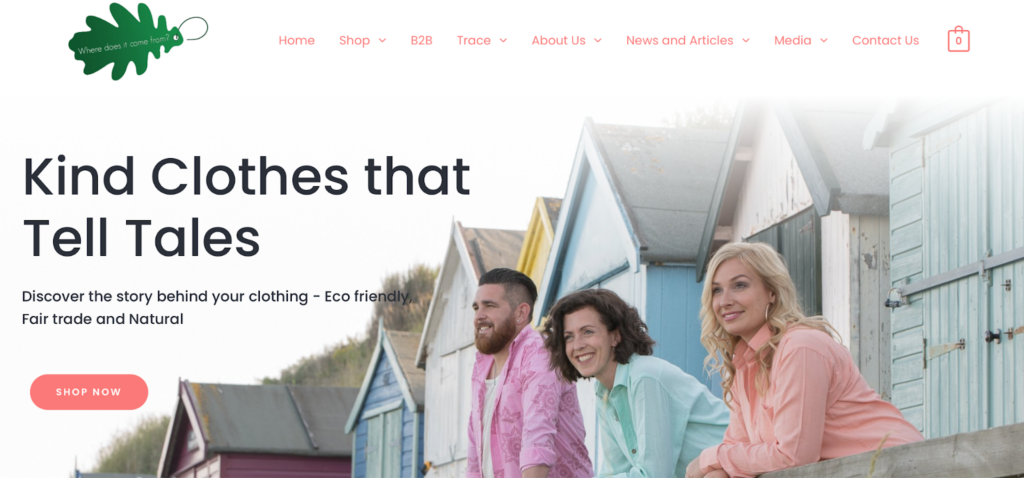
“We design with a focus on minimal material consumption, try to avoid waste and design products that are timeless, durable and repairable.”
Where Does It Come From?
🌎
How do they ensure their sustainability?
Where Does It Come From? prioritizes sustainability by using low-impact materials, reducing their climate impact, and striving for circularity. Firstly, they source fibers exclusively from nature, including fabrics like cotton, hemp, bamboo, TENCELTM, and peace silk. Where Does It Come From? prioritizes cotton fibers that are GOTS-certified and rain-fed. Secondly, they reduce their carbon emissions with low-carbon manufacturing processes, including hand spinning, weaving, printing, and dyeing, and powering their website with renewable energy from a wind-powered server farm. Lastly, they employ circular design projects in upcycling textiles.
🌐
How do they ensure their ethics?
Where Does It Come From? is committed to full traceability. Their garments and accessories come with a QR code telling the full story of the fiber origin, the making, and the maker. The brand also traces all of their supply chain and audits their suppliers, ensuring payment of a living wage for all workers throughout their supply chain. Where Does It Come From?’s producers are accredited by key organizations such as the World Fair Trade Organisation (WFTO), the Indian Fairtrade Forum (IFF), and the Khadi Villages Industry Commission (KVIC) for fair trade.
🤝
Are they part of any giving-back programs?
Where Does It Come From? is a social enterprise.
🛍️
What is their product range?
- Best for: kidswear, menswear, womenswear
- Product range: shirts, pants, shorts, dresses, accessories
- Price range: $$
- Size range: S–XL
Pantee: Upcycled Underwear Made With Deadstock T-Shirts
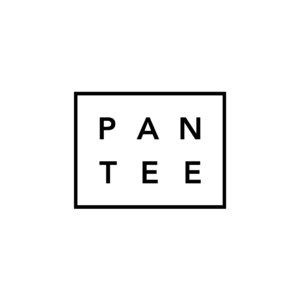
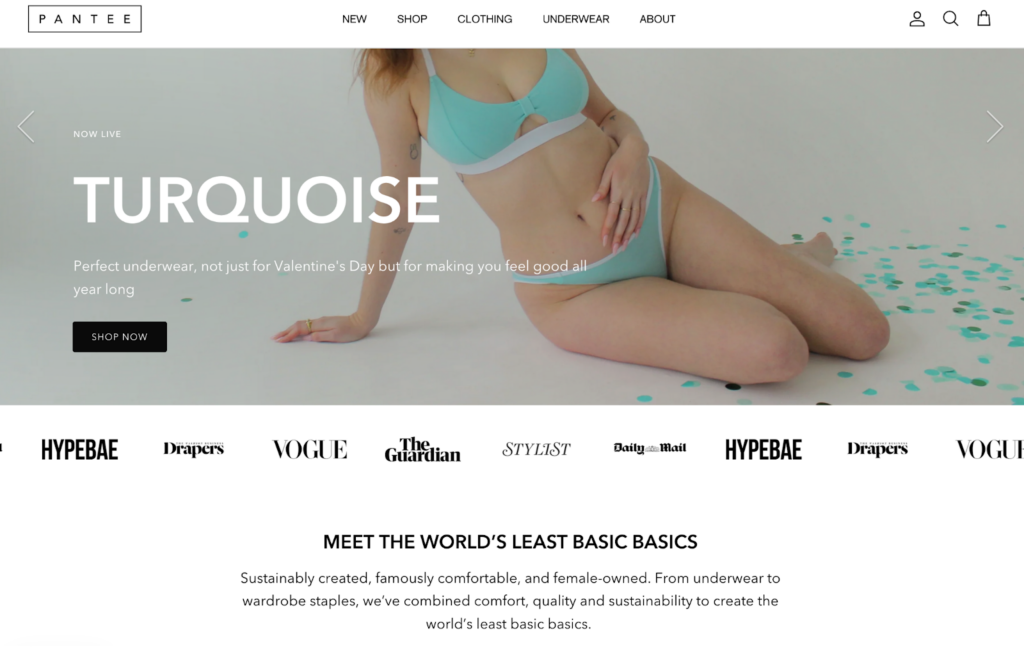
“From underwear to wardrobe staples, we’ve combined comfort, quality and sustainability to create the world’s least basic basics.”
Pantee
🌎
How do they ensure their sustainability?
Pantee ensures sustainability by sourcing low-impact fabrics, minimizing waste, and using recycled packaging. Firstly, they use a high percentage of eco-friendly textile materials, including deadstock fabrics, GOTS-certified organic cotton, and recycled nylon. Specifically, all their bras and briefs are made with 95% cotton and 5% spandex, upcycled from deadstock. Secondly, they manufacture in small batches to avoid unnecessary waste. Lastly, Pantee ships all orders in either a paper mailer bag or a cardboard box made from recycled and recyclable materials. Additionally, their products are individually lined in an #INVISIBLEBAG, a water-soluble, compostable, biodegradable alternative to plastic bags.
🌐
How do they ensure their ethics?
Pantee ensures their ethics by partnering with suppliers certified by the leading sustainability standards (Global Organic Textile Standard and Sedex Members Ethical Trade Audit – SMETA Best Practice Guidance). They also have a Supplier Code of Conduct covering four of the ILO’s Fundamental Principles and Rights at Work.
🤝
Are they part of any giving-back programs?
Pantee is a member of 1% for the planet, pledging at least 1% of all revenue to environmental organizations.
🛍️
What is their product range?
- Best for: womenswear
- Product range: underwear, leggings, tops, bodysuits, sweatshirts, sweatpants, socks
- Price range: $$
- Size range: XS–XL
Noctu: Sleep and Loungewear Made Exclusively With Organic Cotton
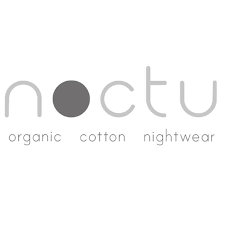
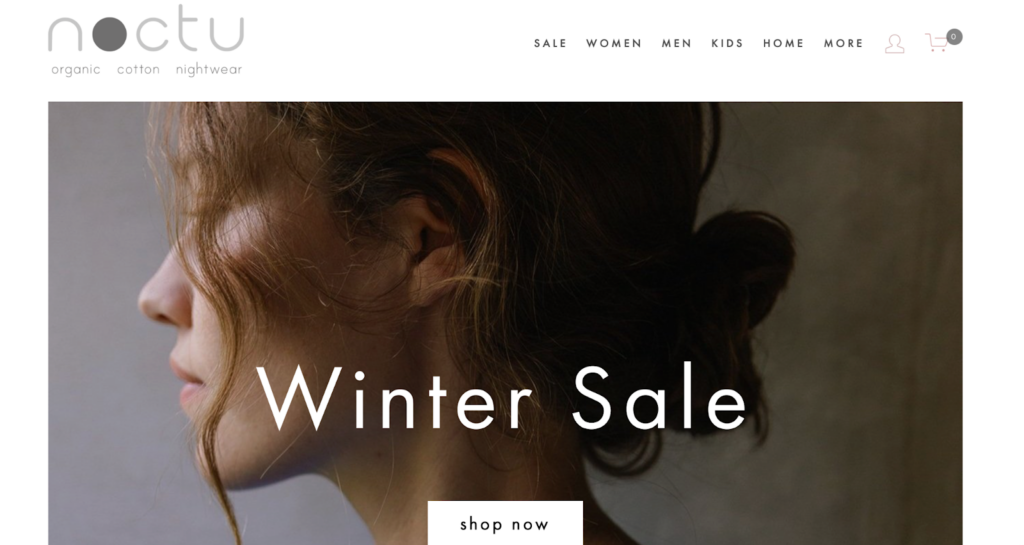
“We strive to minimise our ecological footprint, promote ethical practices, and inspire positive change within the fashion industry.”
Noctu
🌎
How do they ensure their sustainability?
Noctu promotes sustainability by sourcing low-impact materials and reducing their carbon emissions. Firstly, they use exclusively GOTS-certified organic cotton to make their sleep and loungewear. Their garments are also certified by OEKO-TEX®, meaning that every product component, from the fabric to the thread and accessories, has been rigorously tested against a list of up to 350 toxic chemicals. Regarding packaging, Noctu also opts for recyclable and biodegradable materials. They use tissue paper and paper mail bags and don’t use plastic in their packaging. Secondly, they strive to minimize their carbon footprint by implementing energy-efficient practices, carbon offsetting our mail order deliveries, and manufacturing locally in England to reduce transportation emissions.
🌐
How do they ensure their ethics?
Noctu traces most of their supply chain. The last stage of production happens in England, where the brand prioritizes good wages, safe working conditions, and workers’ rights.
🤝
Are they part of any giving-back programs?
Noctu contributes to the World Land Trust and donates money from each sale to purchase 10 square meters (~108 square feet) of endangered wildlife.
🛍️
What is their product range?
- Best for: womenswear, menswear, kidswear
- Product range: bottoms, tops, nighties, jumpsuits, accessories
- Price range: $$
- Size range: XS–XXL
Beaumont Organic: Create “Contemporary Conscious Clothing” Responsibly
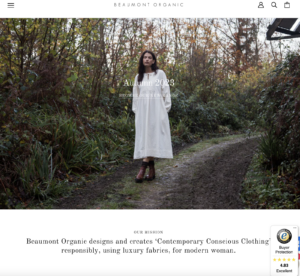
“We work hard behind the scene to provide you with full transparency into the sustainability of our practices and our suppliers”
Beaumont Organic
🌎
How do they ensure their sustainability?
Beaumont Organic prioritizes sustainability by sourcing low-impact materials, using renewable energy in their supply chain, and reducing waste by both using recycled packaging and offering clothes repairs. Additionally, they promote textile circularity with their online circular resale scheme, allowing customers to pass their pre-loved garments onto a new home. The brand also features organic fabrics (organic linen and organic cotton certified by the Global Organic Textile Standard). Lastly, they use recycled fabrics, lowering their impact while reducing textile waste.
🌐
How do they ensure their ethics?
Beaumont Organic is fully transparent about the final stage of their clothes, wherein they use European factories that pay fair wages and have good working conditions. Beaumont Organic also uses wool accredited by the Responsible Wool Standard, guaranteeing the welfare of the animals in their supply chain.
🤝
Are they part of any giving-back programs?
The Beaumont Organic Foundation has supported various community give-back projects in Fiji, including hospital renovations.
🛍️
What is their product range?
- Best for: womenswear, babywear, homeware, accessories
- Product range: shirts, pants, jackets, blazers, knitwear, blouses, underwear
- Price range: $$$
- Size range: XS–XXL
The Level Collective: Organic Cotton Backpacks That Are Designed for Work and Play in the Wild

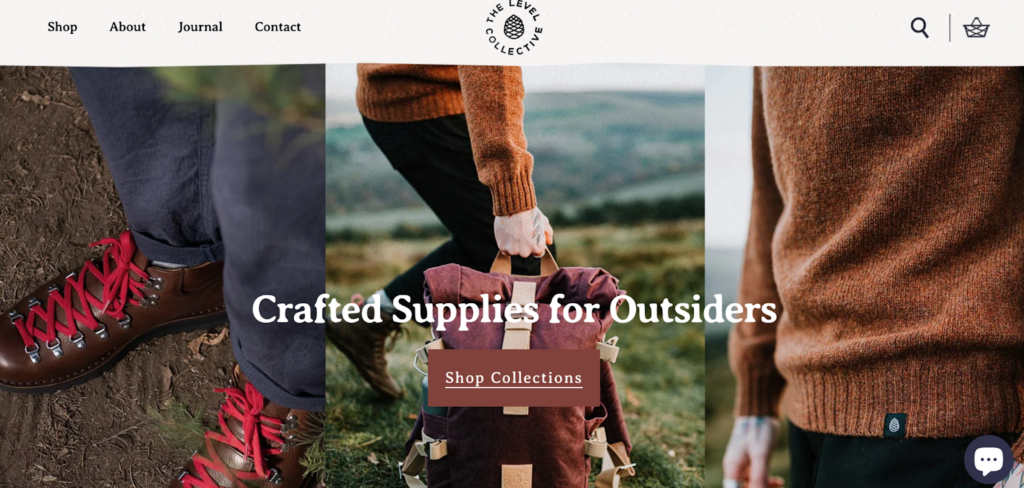
“We lead by example, putting people and planet before profit, and craft purposeful product as an expression of these values. Timeless supplies inspired by adventures in the seasons found outside, not those dictated by fashion.”
The Level Collective
🌎
How do they ensure their sustainability?
The Level Collective ensures sustainability by opting for low-impact varieties of natural fabrics for their backpacks. Specifically, they use organic cotton instead of conventional cotton for the outer shell, recycled wool instead of virgin wool (or fossil-based foam) for the padding, and chromium-free undyed leather instead of chemically tanned leather for the details. Additionally, The Level Collective designs their products for longevity to reduce waste along with the life-cycle impact. They also show their commitment by offering a lifetime of free repairs for their backpacks. To further reduce waste, the brand limits their production runs, uses minimal, recycled, and recyclable packaging, and buys back their worn-out products.
🌐
How do they ensure their ethics?
The Level Collective upholds their suppliers to a Supplier Code of Conduct, which covers four of the ILO’s Fundamental Principles and Rights at Work. They also trace most of their supply chain. Furthermore, most of their products—backpacks included—are manufactured in Britain and Europe under stringent labor laws. In addition, they source blank, off-the-shelf T-shirts and sweaters ethically made from GOTS-certified organic cotton in Bangladesh in Fair Wear Foundation-certified factories.
🤝
Are they part of any giving-back programs?
The Level Collective pledges 3% for People & Planet, donating 3% of their annual profits to charity partners who support vulnerable communities and protect our planet. Additionally, they opt for Mail Out, a social enterprise that specifically trains and employs adults with learning difficulties to pick, pack, and post their orders.
🛍️
What is their product range?
- Best for: womenswear, menswear
- Product range: backpacks, wool knitwear, shirts, jackets, T-shirts, sweaters, hats, socks, accessories, trainers, boots
- Price range: $$$
- Size range: XS–XL
Rozenbroek: High-Quality Clothing Made With Solar Energy
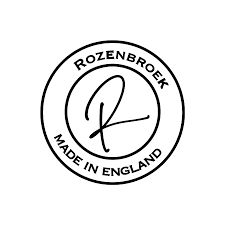
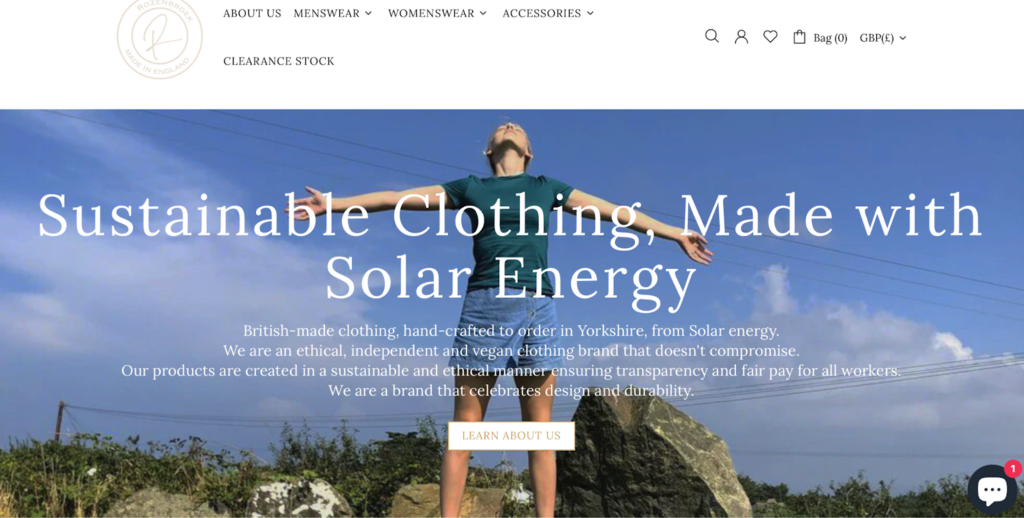
“We are an ethical, independent, and vegan brand that doesn’t compromise.”
Rozenbroek
🌎
How do they ensure their sustainability?
Rozenbroek ensures sustainability by sourcing organic plant fibers, reducing textile waste, and manufacturing using solar energy. They use a high proportion of low-impact materials, including GOTS-certified organic cotton and OEKO-TEX®-certified organic bamboo. Furthermore, they use recycled, recyclable, compostable, or biodegradable packaging for all purchases. Regarding waste reduction, Rozenbroek operates on small batches or made-to-order to reduce inventory while recycling most of their offcuts to make tote bags, scrunchies, and face masks. Lastly, they lower their carbon footprint by making clothes in their own factory powered by solar panels on the roof.
🌐
How do they ensure their ethics?
Rozenbroek visits their factory regularly and pays the textile workers a living wage.
🤝
Are they part of any giving-back programs?
Rozenbroek is not known to be part of any giving-back program.
🛍️
What is their product range?
- Best for: menswear, womenswear
- Product range: shirts, denim, jackets, blazers, tops, blouses, T-shirts, bodysuits, underwear
- Price range: $$$
- Size range: XS–XXL
Mother of Pearl: A Sustainable and Wearable Fashion Brand
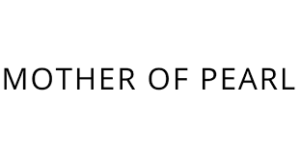
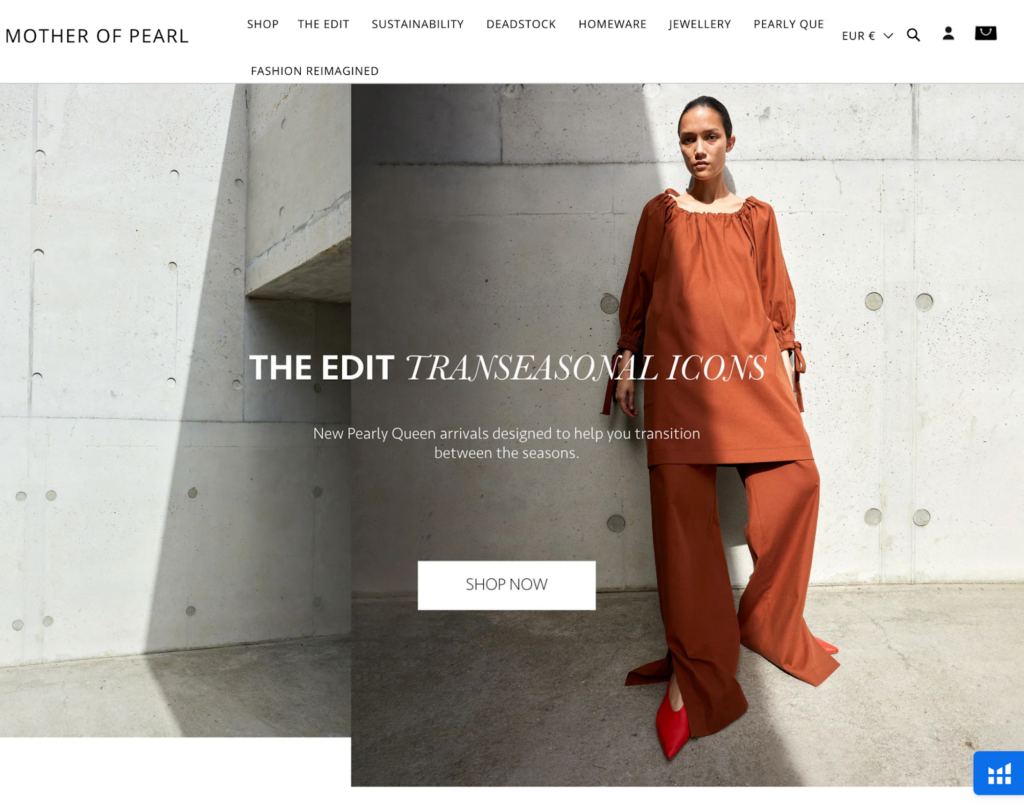
“From our sustainable and ethical supply chain through to pre-loved solutions, every stage of our garment’s life is considered.”
Mother of Pearl
🌎
How do they ensure their sustainability?
Mother of Pearl ensures sustainability by sourcing low-impact natural materials, promoting circularity, and reducing carbon footprints. They use a high proportion of eco-friendly, nature-based fibers, such as organic cotton, TENCEL™ lyocell fibers, and responsible wool. Furthermore, they commit to repairing garments bought and used by their customers via their partnership with SOJO, reusing leftover deadstock for their Fabric Reimagined items, and enabling the reselling of pre-loved vintage clothing on Curate & Rotate or via regular sample sale drops. Finally, Mother of Pearl minimizes the geographical spread of the supply chain to reduce their transporting carbon footprint.
🌐
How do they ensure their ethics?
Mother of Pearl commits to traceability throughout their entire supply chain beyond the final garment production. Most of their factories are based in Europe, being upheld to relatively high standards of safe working conditions. They also request audits from all factories regularly.
🤝
Are they part of any giving-back programs?
Mother of Pearl is not known to be part of any giving-back programs.
🛍️
What is their product range?
- Best for: womenswear
- Product range: dresses, knitwear, jackets, coats, sweatshirts, denim, tops, shirts, T-shirts, skirts, pants
- Price range: $$$
- Size range: XS–XL
Why Is It Important to Buy Products Made of More Sustainable Fabrics
It is important to buy products made of more sustainable fabrics because a sustainable textile industry has a lower carbon footprint, helps save natural resources, and is better for forests, animals, and humans.
Buying Sustainable Fabrics Reduces Your Carbon Footprint
The production of clothing and footwear is estimated to contribute 10% of global greenhouse gas emissions—more than all international flights and shipping combined. If the fashion industry were a country, it would be the fourth largest emitter of carbon dioxide.
One way to reduce the carbon footprint of the clothes you buy is to opt for sustainable fabrics. Sustainable fabrics, which are often made with natural or recycled fibers, have relatively low carbon footprints compared to petroleum-based fabrics. For example, organic cotton made in the US has a carbon footprint of 2.35 kg CO2 (per ton of spun fiber)—a quarter of polyester’s carbon footprint.
Buying Sustainable Fabrics Reduces Demand For Natural Resources and Waste Management
The textile industry uses water and land to grow cotton and other fibers. It is estimated that 79 billion cubic meters of water were used for the sector worldwide in 2015. For example, producing a single cotton T-shirt requires as much water as one person drinks for 2.5 years (2,700 liters of fresh water).
Worse yet, the textile economy is vastly more linear than circular: the largest amount of resources used in clothes ended up in landfills (instead of being recycled to remake clothes). According to a report by the Ellen MacArthur Foundation,
- Less than 3% of materials used in the textile economy in 2015 came from recycled sources.
- In other words, more than 97% of resources used in making clothes are newly extracted.
When clothing items are disposed of within a short period of time—under a year in the case of half of the fast fashion clothes—the natural systems that provide raw materials for fabrics don’t have enough time to recover and regenerate, which could lead to ecological breakdown.
Sustainable fabrics are made with less water and emissions while lasting longer:
- Because they are durable, you don’t need to buy new clothes too often.
- Thus, you help reduce the pressure to extract more resources for making new items.
Similarly, making and consuming sustainable fabrics made with recycled materials reduces the demand for virgin materials while helping tackle waste management.
Buying Sustainable Fabrics Encourages Sustainable Management of Forests
Sustainable natural fiber fabrics are made with raw materials from forests and plantations that are sustainably managed, such as complying with FSC standards.
When you buy sustainable natural fiber fabrics, you discourage unsustainable forestry practices like illegal logging. You can help reduce deforestation, biodiversity loss, and the effects of climate change.
Buying Sustainable Fabrics Encourages Fairer Treatment of Animals
The fashion industry is rife with animal mistreatment when it comes to making animal-based fabrics like wool or silk. Every year, billions of animals suffer and die for clothing and accessories.
Buying sustainable vegan alternatives can help to reduce the pressure on raising more and more animals to meet the demand for animal-based fabrics while sacrificing their well-being and lives.
Suppose you have to buy fabrics made with, for example, wool or silk; make sure you only choose brands committed to cruelty-free products. In that case, you help advocate better treatments for animals raised within the textile industry.
Using Sustainable Fabrics Encourages Fairer Treatment of Textile Workers
Recent statistics from UNICEF estimated as many as 170 million child laborers worldwide, many of whom were engaged in some form of work in the textile industry. They don’t get paid minimum wages and often work long hours.
When you buy sustainable fabrics from brands transparent about the working conditions at their factories, you discourage the use of child labor and help promote better working conditions for textile workers.
How Can You Generally Buy More Sustainable Fabrics
The key to sustainably buying fabrics is to check on relevant environmental and original certifications.
For natural fabrics:
- Global Organic Textile Standard (GOTS): A globally recognized certification system that ensures a certain threshold of organic content has been met. It covers manufacturing, packaging, labeling, transportation, and distribution (but not what happens in the fields where crops are grown).
- USDA Certified Biobased Product: The USDA BioPreferred® Certification is a voluntary certification offered by the United States Department of Agriculture. The certification identifies products made from plants or other renewable materials.
- Ecolabel: Ecolabel is the official European Union voluntary label recognized worldwide for certified products with a guaranteed, independently verified low environmental impact. The label requires high environmental standards throughout the entire life-cycle: from raw material extraction through production and distribution to disposal. It also encourages companies to develop innovative, durable, easy-to-repair, and recyclable products.
For natural fiber semi-natural/semi-synthetic fabrics:
- Forest Stewardship Council: An FSC certification ensures that the wood (or wood-like material) comes from responsibly managed forests that provide environmental, social, and economic benefits.
There are two types of FSC Certification:- FSC Forest Management Certification, with a focus on the origin of the wood—the forest.
- FSC Chain of Custody Certification, which focuses on the path from the forest to the customer’s home.
- Program for Endorsement of Forest Certification: PEFC’s approaches to sustainable forest management are in line with protecting the forests globally and locally and making the certificate work for everyone. Getting a PEFC certification is strict enough to ensure the sustainable management of a forest is socially just, ecologically sound, and economically viable but attainable not only by big but small forest owners.
For recycled fabrics:
- Recycled Claim Standard (RCS): The Textile Exchange RCS was originally developed as an international, voluntary standard that sets requirements for third-party certification of Recycled input and chain of custody.
- The Global Recycled Standard (GRS): The Global Recycled Standard (GRS) is an international, voluntary, full product standard that sets requirements for third-party certification of Recycled Content, chain of custody, social and environmental practices, and chemical restrictions. It can be used for any product with more than 20% recycled material.
For all types of fabrics:
- STeP by OEKO-TEX®: STeP by OEKO-TEX® is an independent certification system for brands, retailers, and manufacturers from the textile and leather industry. It communicates organizational environmental measures, including reducing carbon footprint and water usage.
- OEKO-TEX® STANDARD 100: OEKO-TEX® labels aim to ensure that products pose no risk to human health (i.e., containing banned chemicals).
Some certifications that are signaling brands’ efforts toward lowered environmental impacts and a circular economy are:
- B Corp Certification: The label B Corp is a certification reserved for for-profit companies. Certified holders are assessed on their social and environmental impacts.
- Cradle2Cradle certification: Cradle2Cradle provides a standardized approach to material circularity. It assesses whether products have been suitably designed and made with the circular economy in mind covering five critical categories: material health, material reuse, renewable energy and carbon management, water stewardship, and social fairness.
Final Thoughts
The geographical journey of garments often plays a big role in their sustainability because it affects many social and ecological aspects of a product’s life-cycle, from the treatment of textile workers to the use of chemicals. Thus, it is important to keep the origin of your garments in mind when you make your next purchase.
By purchasing clothes from UK clothing brands that commit to sustainability, you support their mission to create a fairer and less harmful textile industry for all lives on Earth.
Here is the list (again) of the most sustainable UK clothing brands:
- Finisterre
- culthread
- Baukjen
- PANGAIA
- BEEN London
- E.L.V. Denim
- Stay Wild
- People Tree
- Rapanui
- Mayamiko
- Stella McCartney
- Pop My Way
- Neem
- Where Does It Come From?
- Pantee
- Noctu
- Beaumont Organic
- The Level Collective
- Rozenbroek
- Mother of Pearl
To make your use clothing items from these UK clothing brands even more sustainable, follow these steps:
- Buy second hand, recycled, or upcycled clothes made with low-impact materials.
- Keep your clothes for as long as possible.
- At the end-of-life of your clothes, upcycle the materials to extend their usage and arrange for them to be recycled or properly disposed of.
Stay impactful,

Sources
- Science Direct: Life-cycle assessment (LCA)
- Finisterre: Home
- culthread: Home
- Baukjen: Home
- PANGAIA: Home
- BEEN London: Home
- E.L.V. DENIM: Home
- Stay Wild: Home
- People Tree: Home
- Rapanui: Home
- Mayamiko The Label: Home
- Stella McCartney: Home
- Pop My Way: Home
- Neem: Home
- Where Does It Come From?: Home
- Pantee: Home
- Noctu: Home
- Beaumont Organic: Home
- The Level Collective: Home
- Rozenbroek: Home
- Mother of Pearl: Home
- Finisterre: Fabric of Finisterre
- Finisterre: Recycled Fabrics
- Impactful Ninja: How Sustainable Are Recycled Fabrics? A Life-Cycle Analysis
- Global Organic Textile Standard (GOTS): Home
- Impactful Ninja: How Sustainable Are Organic Cotton Fabrics? A Life-Cycle Analysis
- Impactful Ninja: How Sustainable Are Hemp Fabrics? A Life-Cycle Analysis
- Impactful Ninja: How Sustainable Are Linen Fabrics? A Life-Cycle Analysis
- Impactful Ninja: How Sustainable Are Bamboo Fabrics? A Life-Cycle Analysis
- Finisterre: Impact Reports
- Finisterre: Repair Workshop
- Finisterre: Finisterre x RESKINNED | REPURPOSING OLD GEAR FOR NEW ADVENTURES
- Finisterre: POSITIVE IMPACT REPORT 2022
- B Corporation: Finisterre
- Finisterre: Finisterre – A Positive Impact Business
- Finisterre: Anti-Slavery and Trafficking Policy
- Fair Working Conditions (FWC): Home
- Finisterre: Factories of Finisterre
- Open Supply Hub: Home
- Finisterre: Sea7 | The Materclasses
- Finisterre Foundation CIC: Grant Making Policy
- Finisterre: Finisterre Foundation | The Wetsuit Project
- Level Water: Home
- Finisterre: Finisterre Foundation | The Seasuit Project
- Finisterre: Finisterre Foundation | City Kids Surfing
- Good On You: Brand Directory | culthread
- culthread: Our Supply Chain
- Impactful Ninja: How Sustainable Are Piñatex Fabrics? A Life-Cycle Analysis
- Impactful Ninja: How Sustainable Are Polyurethane (PU) Fabrics? A Life-Cycle Analysis
- culthread: OUR PLANET | STYLE THAT RESPECTS OUR PLANET
- Textile Exchange: Global Recycled Standard
- OEKO-TEX: OEKO-TEX® STANDARD 100
- culthread: How to stay sustainable following a clothing purchase
- culthread: OUR PEOPLE
- Dress for Success Greater London: Home
- Crisis: Home
- Collective Aid: Home
- Broken Shovels Farm Sanctuary: Home
- B Corporation: House of Baukjen
- Baukjen: Our Fabrics
- Baukjen: Ecotec recycled cotton
- Baukjen: Recycled wool
- Baukjen: Recycled cashmere
- Baukjen: Newlife recycled polyester
- Baukjen: Recycled down
- Baukjen: Sustainable Impact Report Quarter 2 2023
- Baukjen: Impact Report 2022
- Baukjen: Ecojilin viscose
- Canopy Planet: Hot Button Report
- Baukjen: Pre-Loved Collection
- Baukjen: Women’s Clothing Rental
- Baukjen: Wear, Care & Repair
- Baukjen: Factories
- Good On You: Brand Directory | Baukjen
- International Labour Organization: Home
- International Labour Organization: ILO Declaration on Fundamental Principles and Rights at Work
- Baukjen: Sustainable Attributes
- Baukjen: We are Baukjen
- NHS Charities Together: Home
- World Land Trust: Home
- Baukjen: Philanthropy
- Smart Works: Home
- PANGAIA: Innovative Materials and Systems
- PANGAIA: PREFERRED MATERIAL LIST 2022
- PANGAIA: Impact Report 2022
- PANGAIA: Organic Cotton | Plant Fibers
- Impactful Ninja: How Sustainable Are Organic Cotton Fabrics? A Life-Cycle Analysis
- Impactful Ninja: How Sustainable Are Cotton Fabrics? A Life-Cycle Analysis
- Impactful Ninja: How Sustainable Are Organic Linen Fabrics? A Life-Cycle Analysis
- Impactful Ninja: How Sustainable Are Organic Hemp Fabrics? A Life-Cycle Analysis
- Impactful Ninja: How Sustainable Are Kapok Fabrics? A Life-Cycle Analysis
- Impactful Ninja: How Sustainable Are Cashmere Fabrics? A Life-Cycle Analysis
- PANGAIA: Recycled Cashmere | Earth Positive Fabrics
- PANGAIA: Science & Innovative Hub
- PANGAIA: FLWRDWN™
- PANGAIA: FRUTFIBER™
- PANGAIA: MIRUM®
- PANGAIA: VEGEA
- PANGAIA: AIR INK®
- PANGAIA: miDori® bioWick
- PANGAIA: COLORFIX
- PANGAIA: Code of Conduct
- Good On You: Brand Directory | PANGAIA
- PANGAIA: Diversity and Inclusion Statement
- PANGAIA: Modern Slavery Statement
- PANGAIA: Child Labour & Young Workers Policy
- PANGAIA: Human Rights Policy
- 1% for the Planet: Home
- PANGAIA: Giving back
- BEEN London: What is a circular economy?
- Good On You: Brand Directory | BEEN London
- Textile Exchange: Global Recycled Standard
- BEEN London: Our Innovative Materials
- Impactful Ninja: How Sustainable Are Leather Fabrics? A Life-Cycle Analysis
- Impactful Ninja: How Sustainable Are Piñatex Fabrics? A Life-Cycle Analysis
- Impactful Ninja: How Sustainable Are AppleSkinTM(Apple Eco-Leather) Fabrics? A Life-Cycle Analysis
- BEEN London: BLACK FRIDAY AND GIVING TUESDAY BAG SWAP
- BEEN London: Our Ethos
- BEEN London: Our tree planting initiative
- BEEN London: Rainforest Green
- Tree-Nation: BEEN London forest
- Tree-Nation: John us to reforest the world
- Smart Works: Smart Works London
- E.L.V. DENIM: OUR SUSTAINABLE DESIGN PROCESS
- E.L.V. DENIM: JOIN THE PRE-LOVED REVOLUTION
- Reskinned: Home
- Curate & Rotate: Home
- B Corporation: Stay Wild
- Impactful Ninja: How Sustainable Are ECONYL® Fabrics? A Life-Cycle Analysis
- Impactful Ninja: How Sustainable Are Nylon Fabrics? A Life-Cycle Analysis
- Impactful Ninja: How Sustainable Are Synthetic Fabrics? A Life-Cycle Analysis
- Impactful Ninja: How Sustainable Are Linen Fabrics? A Life-Cycle Analysis
- Impactful Ninja: How Sustainable Are TENCELTM Fabrics? A Life-Cycle Analysis
- Impactful Ninja: How Sustainable Are EcoveroTM Fabrics? A Life-Cycle Analysis
- Stay Wild: OUR ETHOS
- OEKO-TEX: Home
- Impactful Ninja: How Sustainable Are Recycled Fabrics? A Life-Cycle Analysis
- Stay Wild: Size guide
- Stay Wild: Your guide to recycling … properly
- Stay Wild: THE CIRCULARITY PROJECT
- Good On You: Brand Directory | Stay Wild
- Sedex: SMETA Audit
- People Tree: Home
- Impactful Ninja: How Sustainable Are Natural Fabrics Fabrics? A Life-Cycle Analysis
- Impactful Ninja: How Sustainable Are Linen Fabrics? A Life-Cycle Analysis
- Global Organic Textile Standard (GOTS): Home
- Impactful Ninja: How Sustainable Are Organic Cotton Fabrics? A Life-Cycle Analysis
- Impactful Ninja: How Sustainable Are Semi-Natural/ Semi-Synthetic Fabrics Fabrics? A Life-Cycle Analysis
- Impactful Ninja: How Sustainable Are TENCELTM Fabrics? A Life-Cycle Analysis
- Good On You: Brand Directory | People Tree
- People Tree: Our Story
- One World Shop: 10 Principles of Fair Trade
- Rapanui Clothing: Journey
- Impactful Ninja: How Sustainable Are Organic Cotton Fabrics? A Life-Cycle Analysis
- Rapanui Clothing: The future, remade.
- Good On You: Brand Directory | Rapanui Clothing
- Teemill: A Circular Economy Supplier
- Good On You: Brand Directory | Mayamiko The Label
- Mayamiko The Label: OUR MATERIALS
- Impactful Ninja: How Sustainable Are Natural Fabrics? A Life-Cycle Analysis
- Global Organic Textile Standard (GOTS): Home
- Impactful Ninja: How Sustainable Are Organic Cotton Fabrics? A Life-Cycle Analysis
- Impactful Ninja: How Sustainable Are Silk Fabrics? A Life-Cycle Analysis
- Impactful Ninja: How Sustainable Are Linen Fabrics? A Life-Cycle Analysis
- Mayamiko The Label: OUR PROMISES
- By Rotation: Home
- OWNI: Home
- International Labour Organization: ILO Declaration on Fundamental Principles and Rights at Work
- Mayamiko The Label: Impact Report 2022
- Mayamiko The Label: SPONSOR A POSITIVE PAD – HELP EMPOWER WOMEN
- Stella McCartney: Sustainability
- Stella McCartney: Circularity
- Good On You: Brand Directory | Stella McCartney
- Global Organic Textile Standard (GOTS): Home
- Stella McCartney: Organic cotton
- Stella McCartney: Recycled cashmere
- Stella McCartney: BananaTex®
- Stella McCartney: VEGEA
- Stella McCartney: Mylo™
- Stella McCartney: MIRUM®
- Impactful Ninja: How Sustainable Are Leather Fabrics? A Life-Cycle Analysis
- Stella McCartney: Frayme Mylo™
- Stella McCartney: Traceability and Blockchain Technology
- Stella McCartney: Metals
- Stella McCartney: Spotlight on Airslide
- Stella McCartney: Paper and Packaging
- Stella McCartney: Clevercare
- Stella McCartney: Measuring our impact
- Ethical Trading Initiative: Home
- Impactful Ninja: How Sustainable Are Lambswool Fabrics? A Life-Cycle Analysis
- Impactful Ninja: How Sustainable Are Sheep Wool Fabrics? A Life-Cycle Analysis
- Textile Exchange: Responsible Wool Standard
- Stella McCartney: Charities
- Million Trees Miami: Home
- Naked Heart Foundation: Home
- Meat Free Monday: Home
- Sea Shepherd: Home
- Pop My Way: Sustainability
- Global Organic Textile Standard (GOTS): Home
- Pop My Way: Pima Cotton
- OEKO-TEX: OEKO-TEX® STANDARD 100
- Europa: REACH Regulation
- Pop My Way: Packaging
- Forest Stewardship Council
- Pop My Way: About Us
- Pop My Way: Pop My Way ‘Preloved’
- Pop My Way: Our Factory and People
- Good On You: Brand Directory | Neem
- Neem: Planet friendly
- Impactful Ninja: How Sustainable Are Recycled Cotton Fabrics? A Life-Cycle Analysis
- Neem: Regenerative Cotton
- Neem: ZQ Merino Wool
- Discover ZQ: ZQ Merino
- Impactful Ninja: How Sustainable Are Merino Wool Fabrics? A Life-Cycle Analysis
- Green Story: Home
- Simpli Zero: Harmalik Wind Power Plant
- Simpli Zero: Reforestation
- Simpli Zero: Safe Community Water
- Neem: Recycled Cotton
- Neem: Clothes Repair Service
- Neem: Wear Well Scheme
- Ethical Brands Fors Fashion Revolution: Home
- LinkedIn: Where Does It Come From?
- Impactful Ninja: How Sustainable Are Cotton Fabrics? A Life-Cycle Analysis
- Impactful Ninja: How Sustainable Are Hemp Fabrics? A Life-Cycle Analysis
- Impactful Ninja: How Sustainable Are Bamboo Fabrics? A Life-Cycle Analysis
- Impactful Ninja: How Sustainable Are TENCELTM Fabrics? A Life-Cycle Analysis
- Impactful Ninja: How Sustainable Are Silk Fabrics? A Life-Cycle Analysis
- Where Does It Come From?: FAQs
- Where Does It Come From?: Trace Your Clothes
- Good On You: Brand Directory | Where Does It Come From?
- World Fair Trade Organisation: Home
- Good On You: Brand Directory | Pantee
- Pantee: Our Impact
- Pantee: Deadstock Fabrics
- Global Organic Textile Standard: Home
- Impactful Ninja: How Sustainable Are Organic Cotton Fabrics? A Life-Cycle Analysis
- Impactful Ninja: How Sustainable Are Recycled Nylon Fabrics? A Life-Cycle Analysis
- Impactful Ninja: How Sustainable Are Cotton Fabrics? A Life-Cycle Analysis
- Impactful Ninja: How Sustainable Are Spandex Fabrics? A Life-Cycle Analysis
- Pantee: About Us
- Invisible Company: INVISIBLEBAG
- Pantee: Packaging
- SEDEX: Sedex Members Ethical Trade Audit – SMETA Best Practice Guidance
- International Labour Organization: ILO Declaration on Fundamental Principles and Rights at Work
- One Percent For The Planet: Home
- Global Organic Textile Standard (GOTS): Home
- Impactful Ninja: How Sustainable Are Organic Cotton Fabrics? A Life-Cycle Analysis
- Noctu: Sustainability
- OEKO-TEX: Home
- Good On You: Brand Directory | Noctu
- World Land Trust : Home
- Good On You: Brand Directory | Beaumont Organic
- Beaumont Organic: Shipping & Delivery
- Beaumont Organic: Repair Scheme
- Beaumont Organic: Resale Scheme
- Impactful Ninja: How Sustainable Are Organic Fabrics? A Life-Cycle Analysis
- Impactful Ninja: How Sustainable Are Organic Linen Fabrics? A Life-Cycle Analysis
- Impactful Ninja: How Sustainable Are Organic Cotton Fabrics? A Life-Cycle Analysis
- Global Organic Textile Standard: Home
- Impactful Ninja: How Sustainable Are Recycled Fabrics? A Life-Cycle Analysis
- Beaumont Organic: Our Sustainable Story
- Beaumont Organic: The Beaumont Organic Foundation
- The Level Collective: British Made, Waxed Canvas Backpacks
- Impactful Ninja: How Sustainable Are Natural Fabrics? A Life-Cycle Analysis
- The Level Collective: Why Organic Cotton?
- Impactful Ninja: How Sustainable Are Cotton Fabrics? A Life-Cycle Analysis
- Impactful Ninja: How Sustainable Are Recycled Wool Fabrics? A Life-Cycle Analysis
- Impactful Ninja: How Sustainable Are Wool Fabrics? A Life-Cycle Analysis
- The Level Collective: Our Backpack Ingredients
- Impactful Ninja: How Sustainable Are Leather Fabrics? A Life-Cycle Analysis
- The Level Collective: Warranty & Repair
- Good On You: Brand Directory | The Level Collective
- The Level Collective: 10 things that make us different
- The Level Collective: Buy Back Project
- The Level Collective: Code of Conduct
- International Labour Organization: Fundamental Principles and Rights at Work
- Global Organic Textile Standard (GOTS): Home
- Impactful Ninja: How Sustainable Are Organic Cotton Fabrics? A Life-Cycle Analysis
- Fair Wear Foundation: Home
- The Level Collective: 3% for People & Planet
- Mail Out: Home
- Rozenbroek: About Us
- Good On You: Brand Directory | Rozenbroek
- Global Organic Textile Standard: Home
- Impactful Ninja: How Sustainable Are Organic Cotton Fabrics? A Life-Cycle Analysis
- OEKO-TEX: Home
- Impactful Ninja: How Sustainable Are Bamboo Fabrics? A Life-Cycle Analysis
- Mother of Pearl: FASHION REIMAGINED
- Mother of Pearl: MOP Materials
- Mother of Pearl: Circularity
- Mother of Pearl: Environment
- Good On You: Brand Directory | Mother of Pearl
- Impactful Ninja: How Sustainable Are Organic Cotton Fabrics? A Life-Cycle Analysis
- Impactful Ninja: How Sustainable Are Lyocell Fabrics? A Life-Cycle Analysis
- Impactful Ninja: How Sustainable Are Wool Fabrics? A Life-Cycle Analysis
- SOJO: Home
- Mother of Pearl: Deadstock Sale
- Curate & Rotate: Home
- Mother of Pearl: TRANSPARENCY
- Mother of Pearl: SOCIAL RESPONSIBILITY
- European Parliament: The impact of textile production and waste on the environment (infographic)
- Science Direct: The challenge of “Depeche Mode” in the fashion industry – Does the industry have the capacity to become sustainable through circular economic principles, a scoping review
- Science Direct: Carbon Footprint of Textile and Clothing Products
- European Parliament: Environmental impact of the textile and clothing industry
- European Parliament: What if fashion were good for the planet?
- Ellen MacArthur Foundation: A New Textiles Economy: Redesigning fashion’s future
- McKinsey: Style that’s sustainable: A new fast-fashion formula
- Forest Stewardship Council: Home
- Our World in Data: Deforestation and Forest Loss
- Our World in Data: Renewable Energy
- Peta: Animals Used For Clothing
- The Guardian: Child labour in the fashion supply chain
- Impactful Ninja: How Sustainable Are Natural Fabrics? A Life-Cycle Analysis
- Global Organic Textile Standard (GOTS): Home
- BioPreferred: WHAT IS THE BIOPREFERRED PROGRAM?
- European Commission: Environment | EU Ecolabel
- Impactful Ninja: How Sustainable Are Semi-Natural/Semi-Synthetic Fabrics? A Life-Cycle Analysis
- Forest Stewardship Council
- FSC Forest Management Certification
- FSC Chain of Custody Certification
- Textile Exchange: The RCS and GRS are designed to boost the use of recycled materials
- Program for Endorsement of Forest Certification
- Impactful Ninja: How Sustainable Are Recycled Fabrics? A Life-Cycle Analysis
- Textile Exchange: Recycled Claim Standard
- Textile Exchange: Global Recycled Standard
- OEKO-TEX: Certification according to STeP by OEKO-TEX®
- OEKO-TEX: STANDARD 100 by OEKO-TEX®
- B Corp Certification: Home
- C2CCertified: Home





